Carp still has an image problem outside of its breeding areas such as the Upper Palatinate Forest or Franconia. The image of the carp swimming sadly in the bathtub, which then ends up on the dinner table with lots of bones and a musty taste, persists. Yet natural carp is delicious and one of the most sustainable edible fish we have. It is a high-quality natural product, swims for three summers with plenty of space in the middle of an intact ecosystem and feeds mainly on the natural food in the pond. The carp season runs from the beginning of October to the end of April and during this time you will find carp on almost every menu in the Tirschenreuth region. Fresh, regional and sustainable – these are three good reasons to turn to carp for culinary delights.
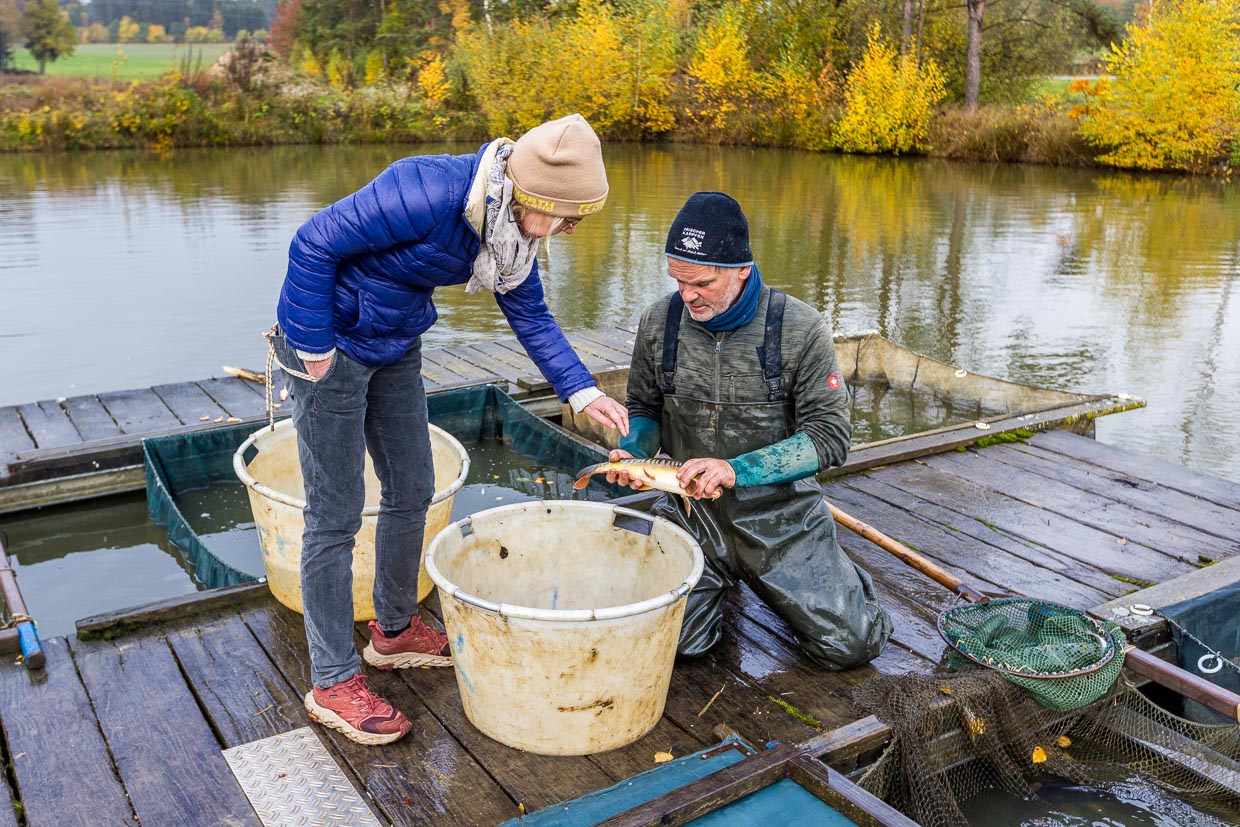
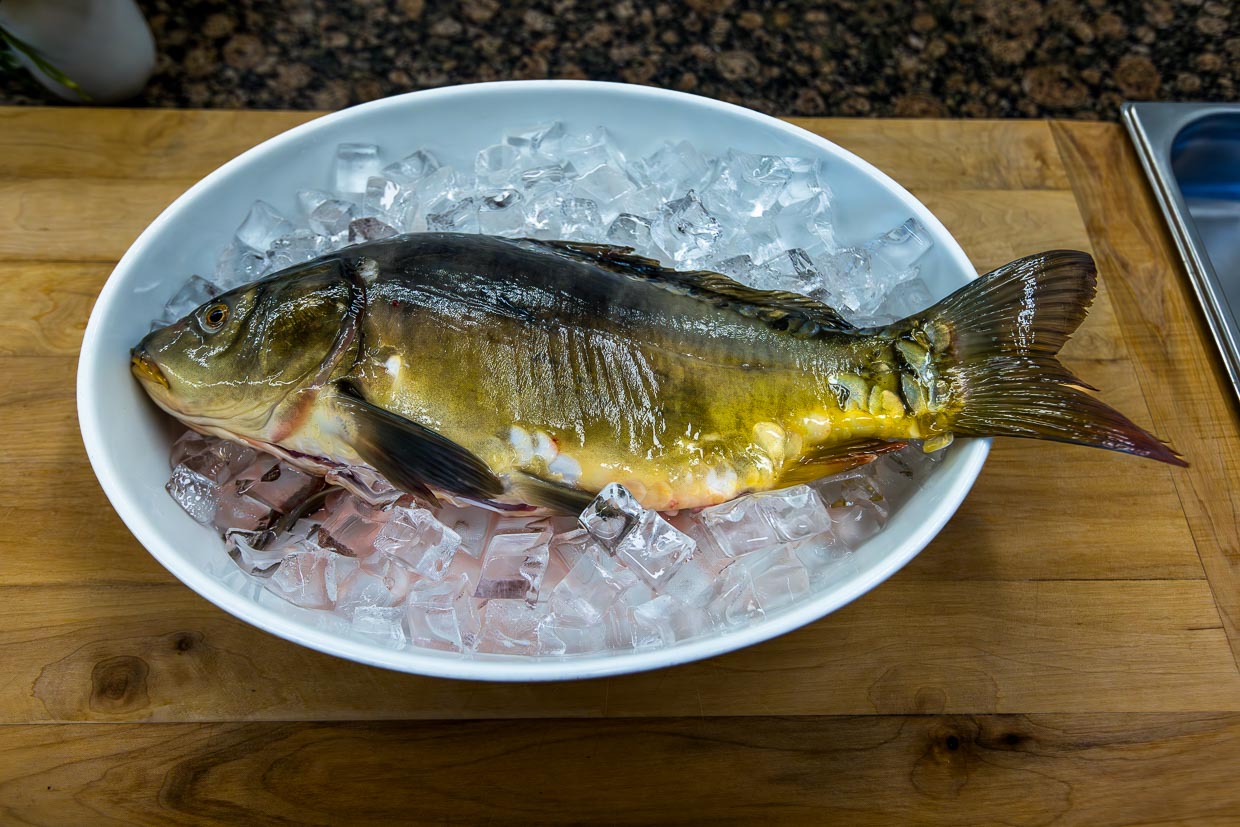
The finest natural product
Carp from traditional pond farming is a real delicacy and can be prepared in a variety of ways. The carp fillet is particularly popular. Using a special cutting technique, the Y-bones are chopped up in such a way that they can be safely eaten without even noticing them. Carp meat is light in color and juicy. With increasing age, the meat becomes darker, which is due to the storage of the blood pigment hemoglobin, but has no influence on the taste. The edible carp is slaughtered at the age of three and weighs around 1.5 kilos. Popular dishes include the classic blue carp and baked carp fillet in beer batter or in a potato crust. Carp fillet is also available smoked or in a jar as carp in aspic.
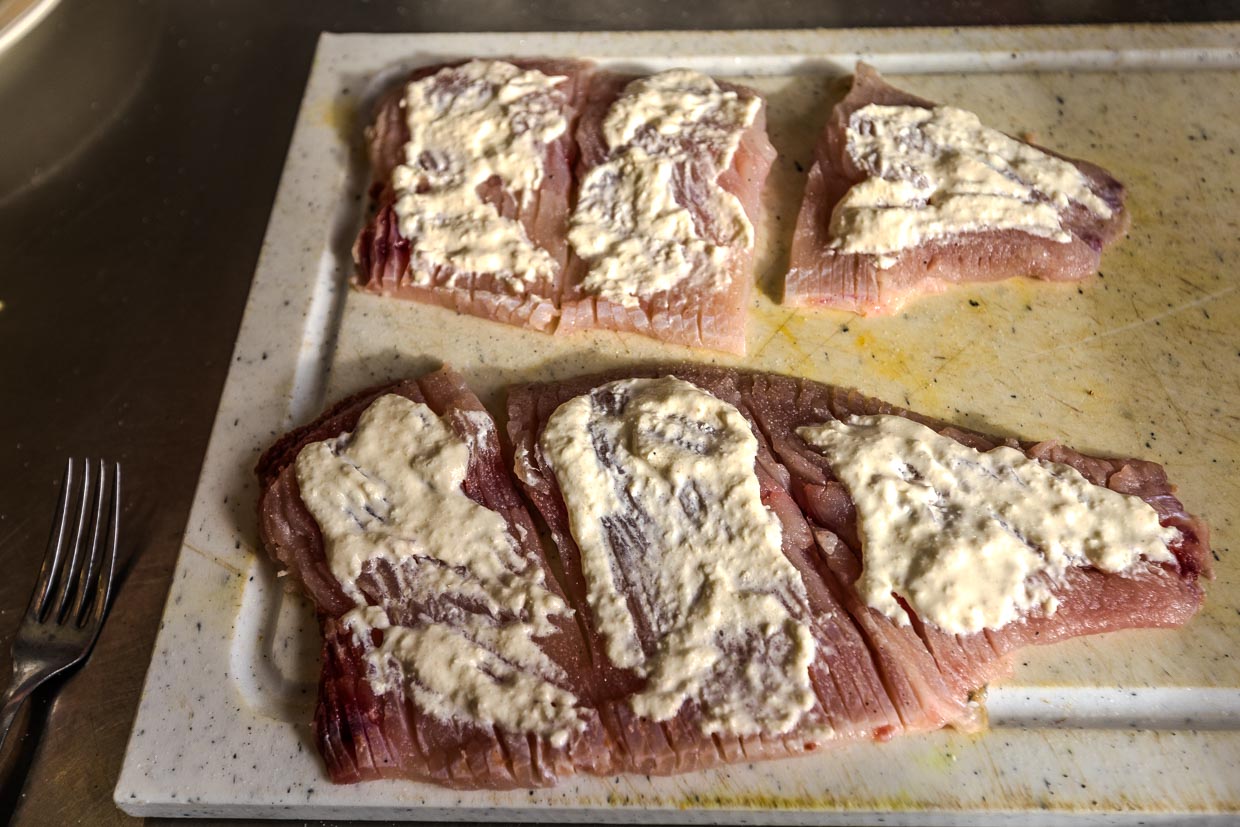
In order to experience the diverse carp cuisine, however, people have to come to the carp. The extensive pond farming in the Upper Palatinate Forest is the exact opposite of turbo fish farming as we know it from Norwegian salmon farms. The farmed fish swim in natural ponds, are fed minimally and spend three summers in the pond. During this time, otters, cormorants and herons have free access to the water and often cause large losses of fish. The pond manager, who put the carp larvae into the pond three years earlier, never knows on the day of fishing how many of his fish have made it to the third summer. Extensive farming and the increase in natural predators limit the fish population so that the carp is not even marketed nationwide. The good news, however, is that the Upper Palatinate Forest also has beautiful nature and cultural destinations to offer and is therefore worth a trip in more ways than one.
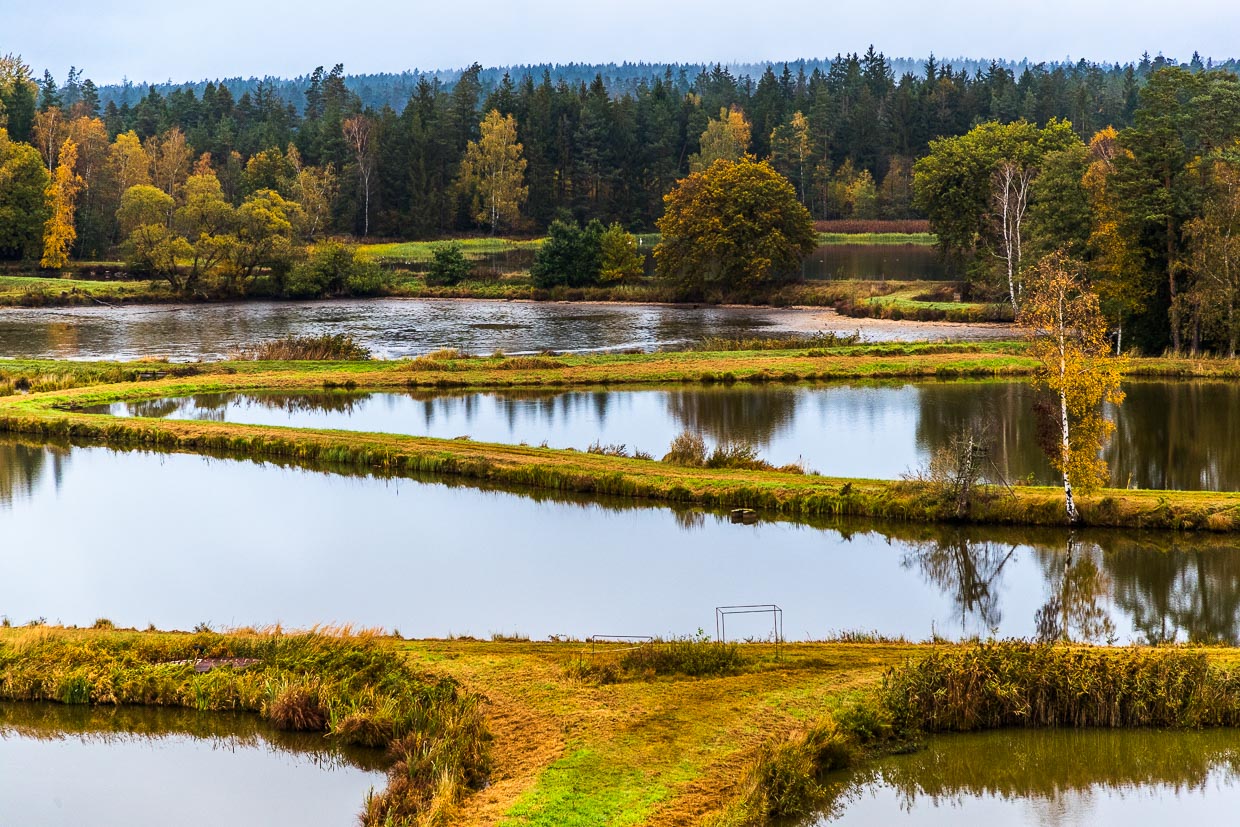
Classics from the monastery kitchen
Blue carp is a traditional dish that is closely associated with Christian holidays and is still particularly popular on Christmas Eve or Good Friday. The Cistercian monks at Waldsassen Monastery recognized the potential for fish farming in the region as early as the 12th century. The monks considered fish to be an ideal fasting food and the kaolin-rich soil, which acts like a natural pond liner, was conducive to the creation and maintenance of the ponds.
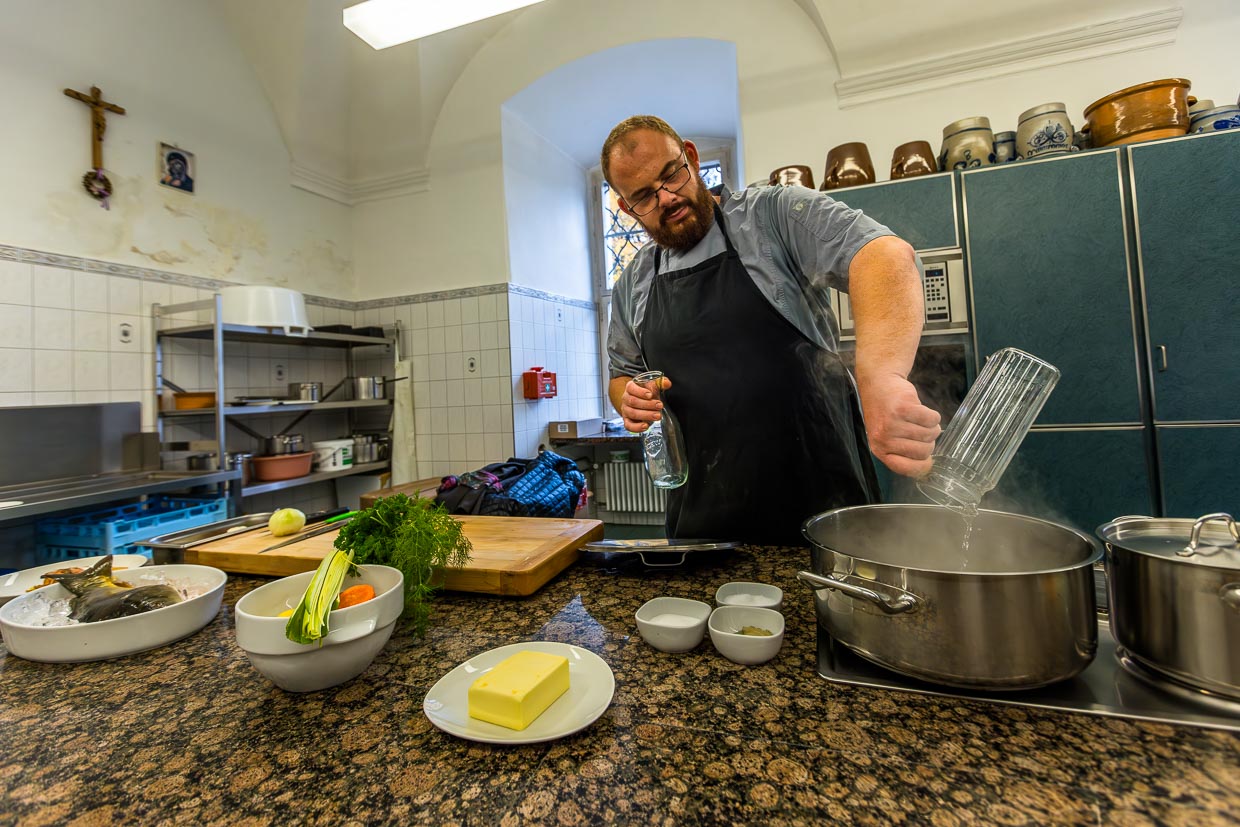
You can still eat carp today at the St. Joseph Guest House, the hotel and restaurant of the Cistercian abbey in Waldsassen. Head chef Benjamin Standfest prepares blue carp with parsley potatoes. Only when the carp is freshly slaughtered does the mucus layer on the fish skin turn blue. Vinegar in the broth stabilizes the blue color. Blue cooking is a traditional preparation for freshwater fish such as carp, tench and trout. The Upper Palatinate farmer manages his own ponds and keeps his fish in the clear running water of the Wondreb river for weeks before slaughtering. Fish is rarely served fresher than in the land of 1000 ponds, as there are only a few hours between slaughtering and processing.
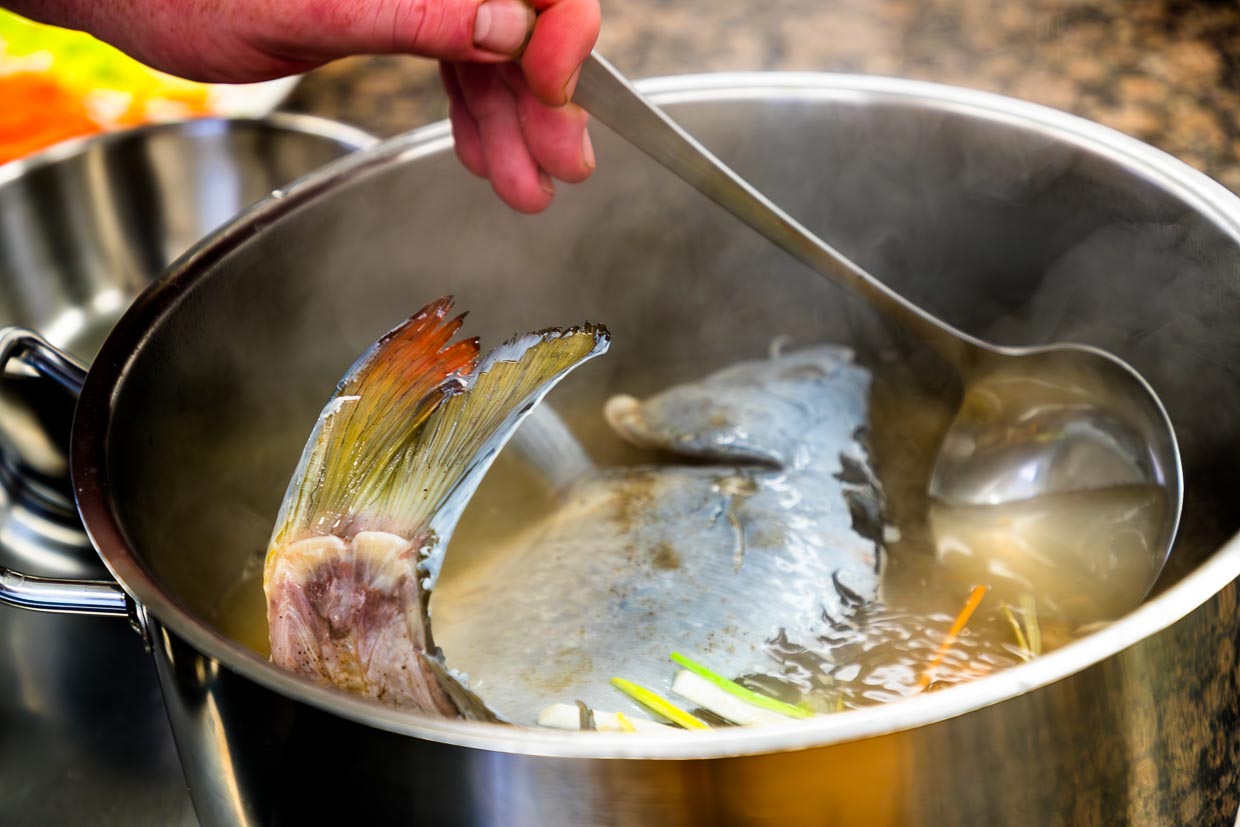
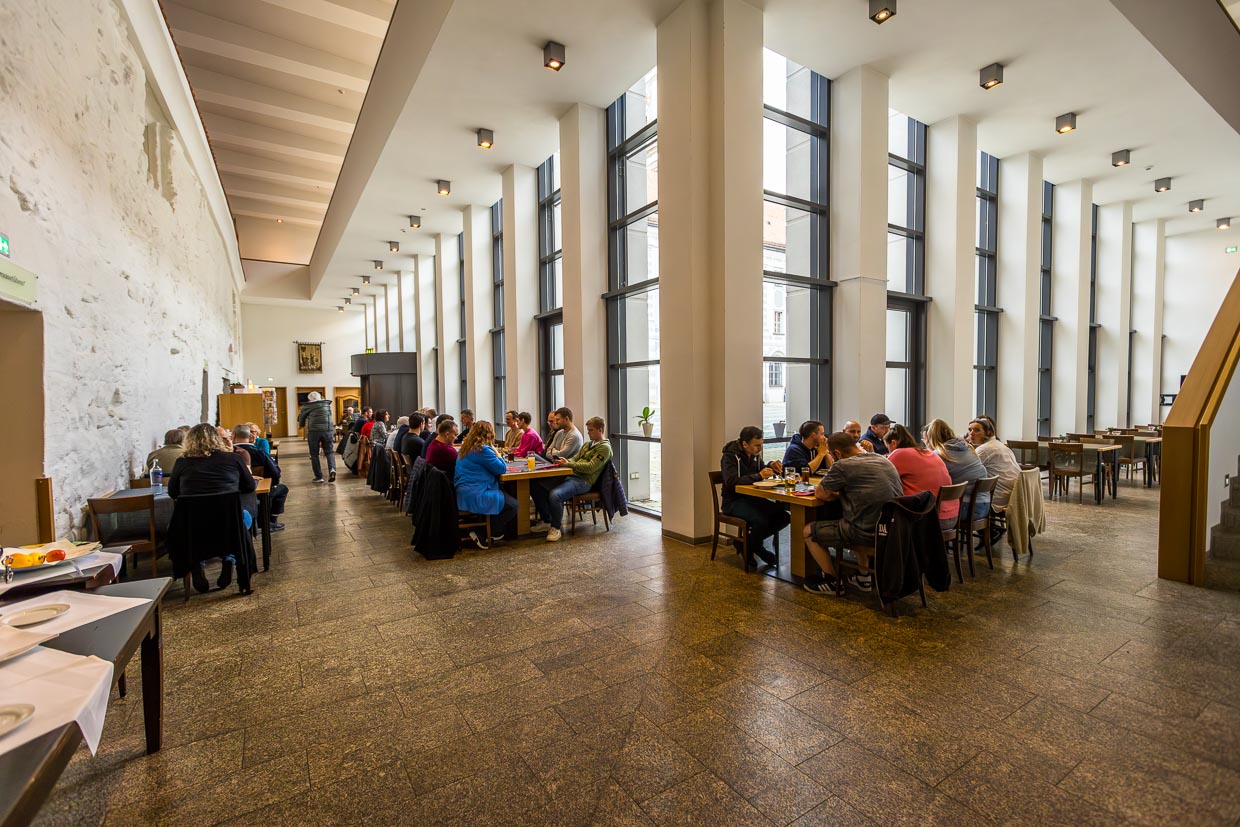
Fischhof Bächer in Muckenthal
Ponds have been farmed in the Upper Palatinate for more than 1000 years. Cistercian monks once farmed fish on a grand scale. In their heyday there were 6,700 ponds, today there are still over 4,000 ponds. But now it is mainly the fishing families who pass on the centuries-old knowledge. At Fischhof Bächer in Muckenthal near Wiesau, everything revolves around carp.
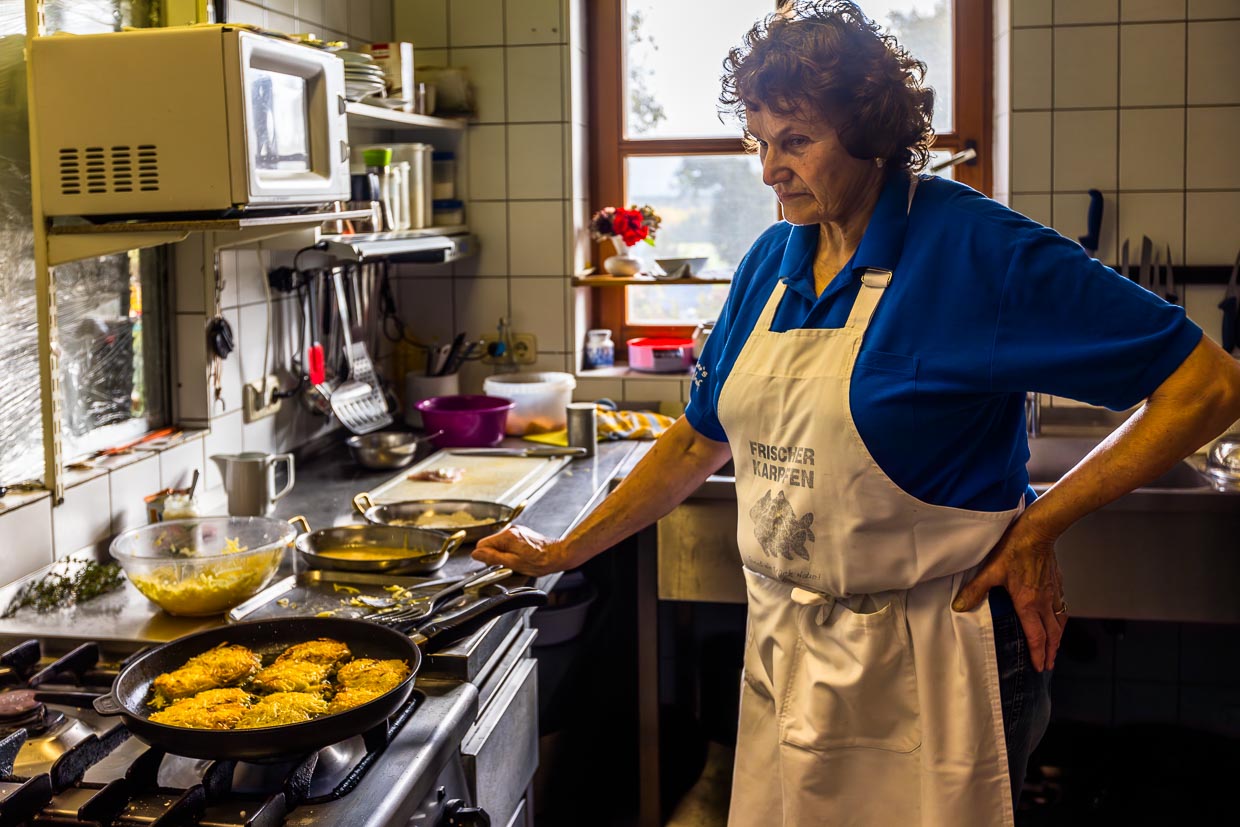
Three generations take care of every aspect of carp farming, from breeding to the finished fish, from stocking fish for anglers to smoked fish for gourmets. During the carp season from the end of September to the end of April, Fischhof Bächer offers fish menus in the restaurant every Friday and Saturday as well as fresh fish products in the in-house fish store. Elsa Bächer and her daughter-in-law Manuela are in the kitchen. While son Klaus Bächer and granddaughter Lena Bächer take care of breeding, pond maintenance, slaughtering and marketing. Fischhof Bächer is definitely a good place to try fresh carp dishes.
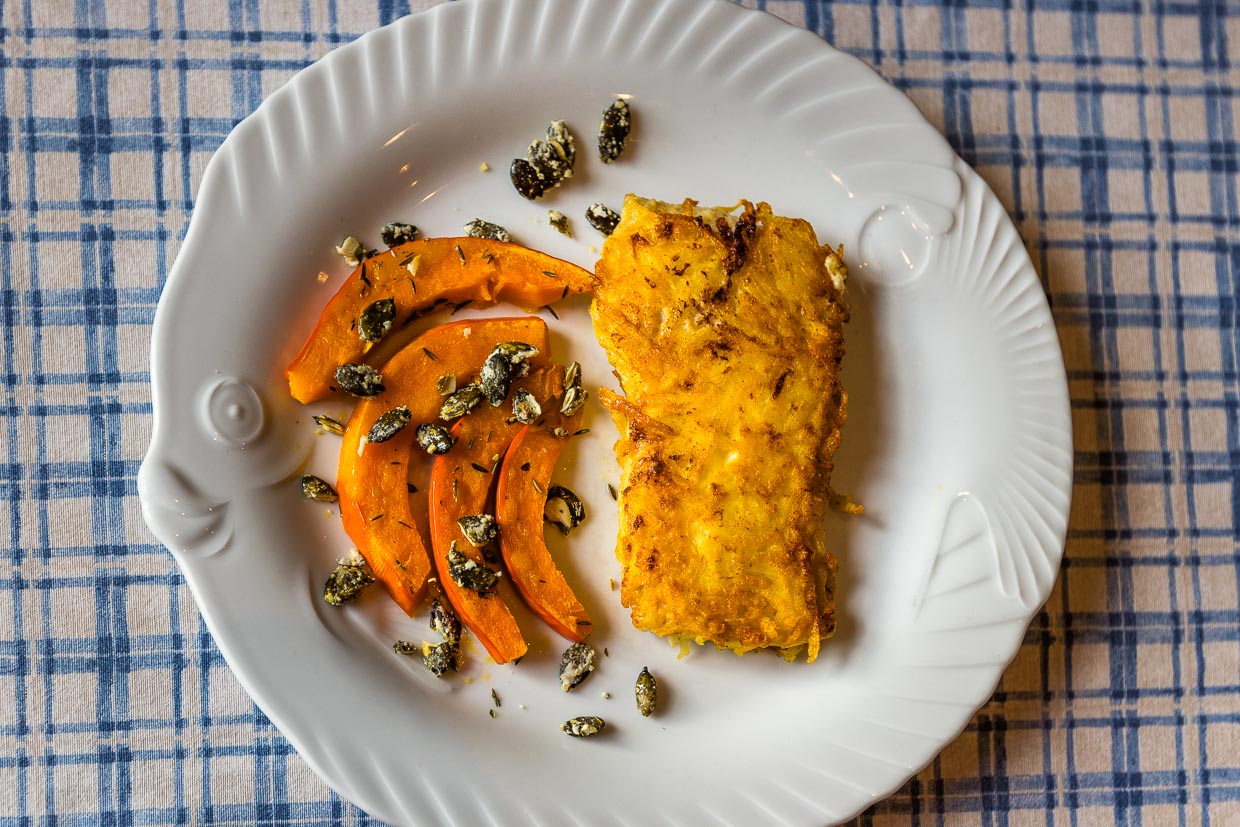
From wild carp, mirror carp and silver carp
A wild carp is completely covered in scales. However, the Cistercian monks from Maulbronn managed to breed the scales off the carp so that it could be chewed better. This was a real step forward, as carp used to be eaten with skin and scales. The wild form of the carp is completely covered in scales and is elongated and flattened at the sides. Cultivated forms such as the mirror carp or the larger silver carp are higher-backed and more pot-bellied.
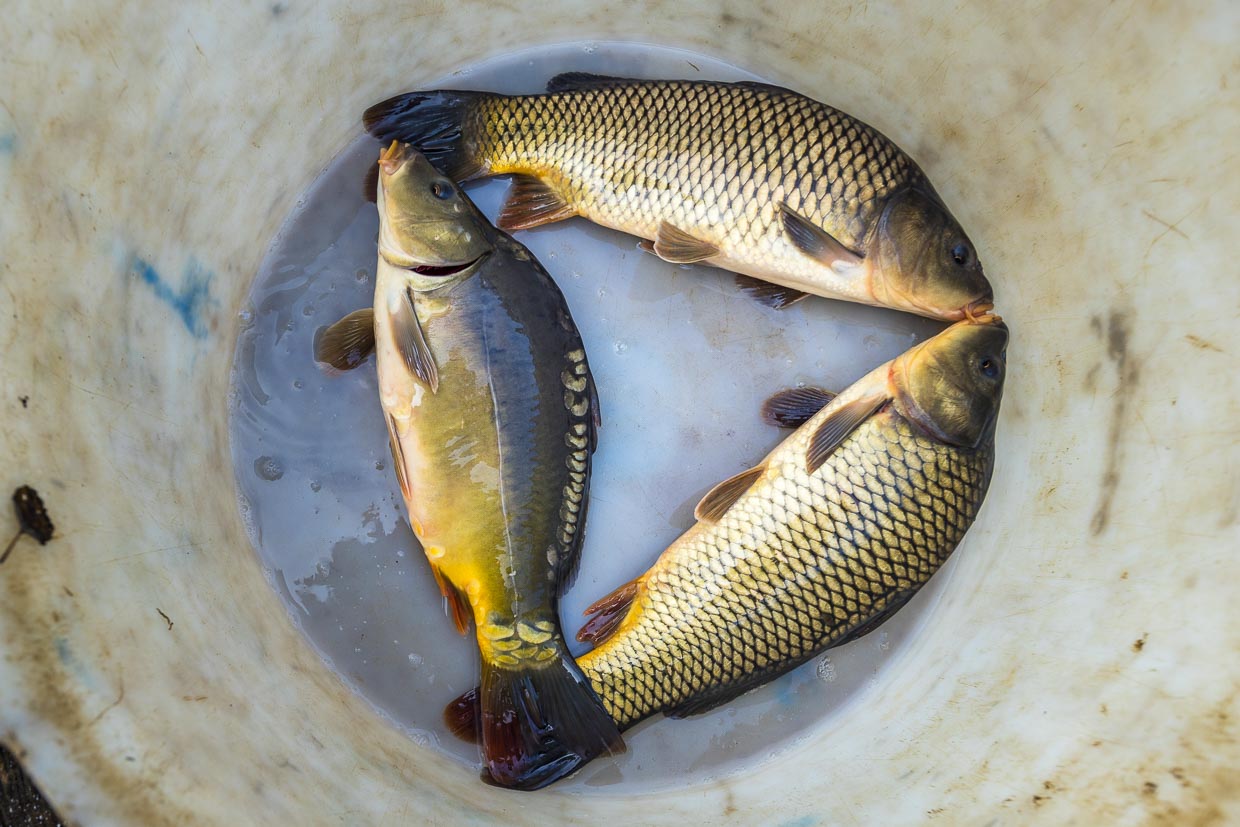
For some years now, carp has also been very popular in Michelin-starred cuisine. In the search for regional and sustainable products, upscale restaurants in particular have taken carp out of the bathtub and put it in the sous vide bath. Like beet and swede before it, carp has undergone a culinary transformation from wallflower to star on the plate. Chef Ingo Mark grills the fillet of silver carp and glazes the fish with caramelized fish head lacquer. He combines pumpkin slices sous-vide with a carp praline and a pumpkin sauce.
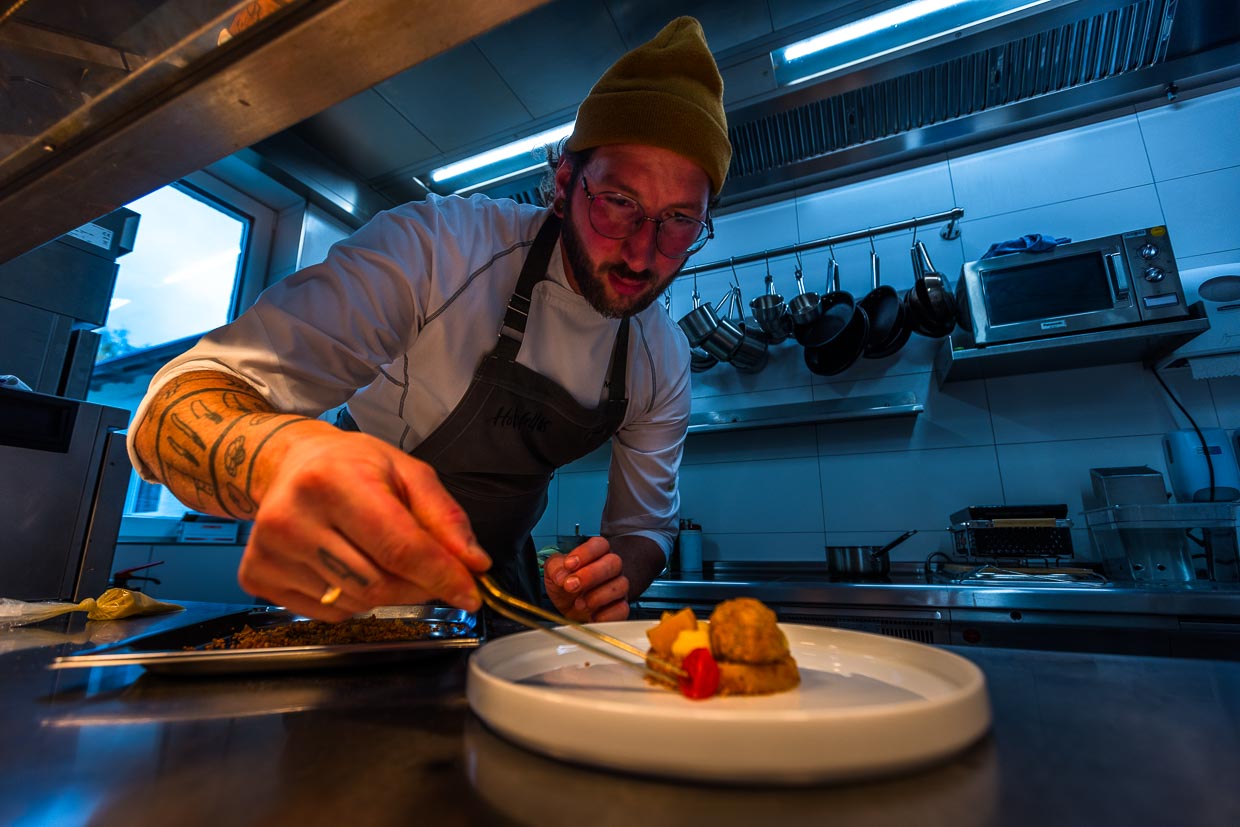
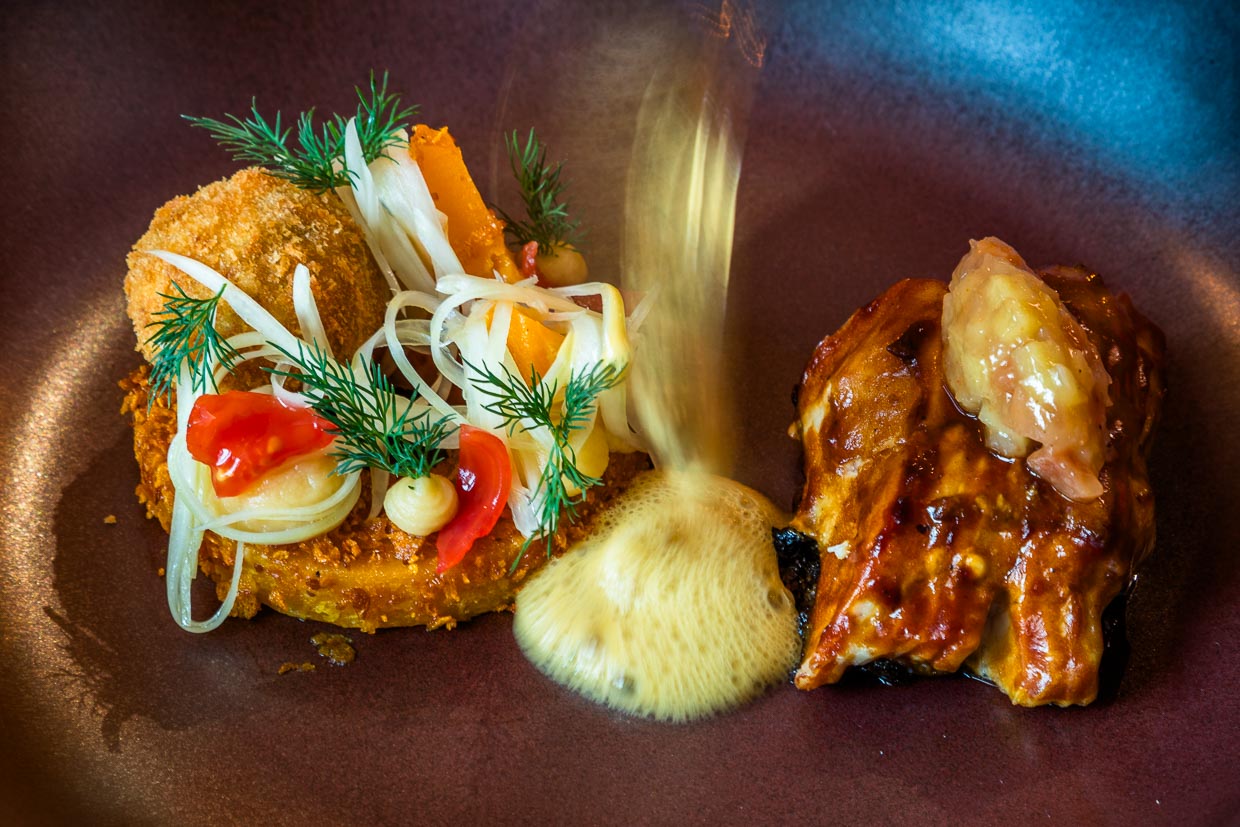
Waldnaabaue nature reserve
At the beginning of October, the pond keepers begin to empty the ponds. The younger fish are then transferred to frost-proof wintering ponds, while the three-year-old carp are placed in holding tanks and finally served on the plate. The season lasts until the end of April and carp are on many menus during this time. Pond keepers such as Thomas Beer from Mitterteich offer guided tours of the pond facilities. Beer, a master fish farmer, also provides information about the course of the fishing year outside of the season, from spawning the fish in the spring to rearing the fry, feeding in the summer and fishing in the fall. To expand your knowledge of carp, we recommend a visit to the Upper Palatinate with hikes along chains of ponds, discussions with pond keepers and culinary surprises. The Waldnaabaue cultural landscape can be explored on foot or by bike. The Fischhofpark and the Museumsquartier in Tirschenreuth tell a lot about the history of pond farming and the Waldsassen Monastery is a perfect starting point to follow in the footsteps of the Cistercian monks.
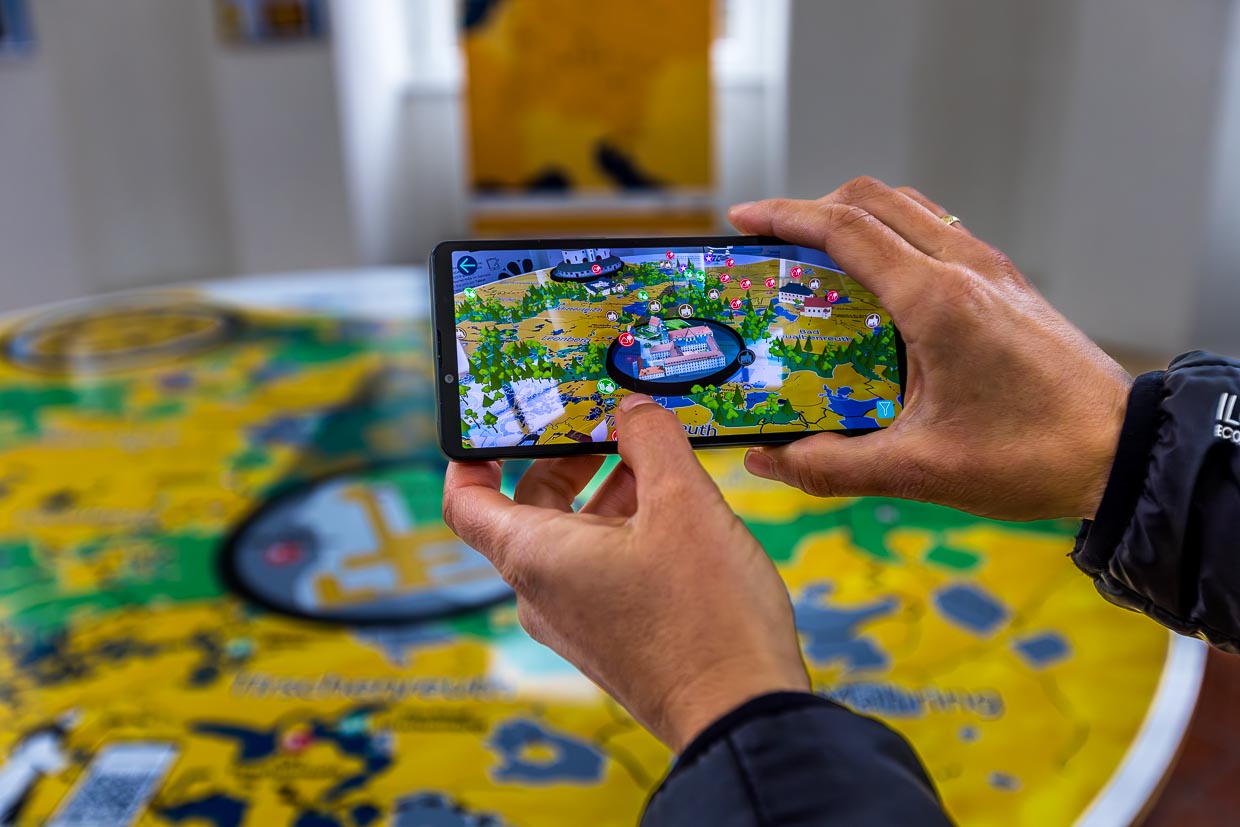
Carp and Zoigl, two Upper Palatinate specialties
The Upper Palatinate not only has carp farming to offer as an outstanding cultural asset, but also Zoigl beer. The palatable Zoigl beer is a bottom-fermented, unfiltered traditional beer. Windischeschenbach, with around 5,700 inhabitants, is considered the center of Zoigl. Zoigl is part of Bavaria’s intangible cultural heritage and is fermented with bottom-fermenting yeast in cold private cellars or rock cellars. Zoigl beer is amber in color, slightly cloudy and tastes fresh and drinkable despite its low carbon dioxide content. Zoigl-Wirtschaft is open all year round, so you will always find a Zoigl-Wirtschaft offering Zoigl beer and a small menu with hearty dishes when visiting the Upper Palatinate. More about the Zoigl pub in the Upper Palatinate and the brewing process at the Kommunbrauhaus Falkenberg brewery
Travel tips Upper Palatinate Forest and Tirschenreuth pond pan
Upper Palatinate Forest. Tips for leisure activities as well as cycling and hiking tours
Fischhof Beer offers rooms and apartments as well as guided tours of the ponds
Fischhof Bächer Restaurant and fish store as well as fish farm
St.Jospeh guest house in Waldsassen monastery with restaurant and room rental
Restaurant Altmugler Sonne in Bad Neualbenreuth offers fish menus as part of the Fish Experience Weeks
The research was supported by the Upper Palatinate Forest Tourism Association

